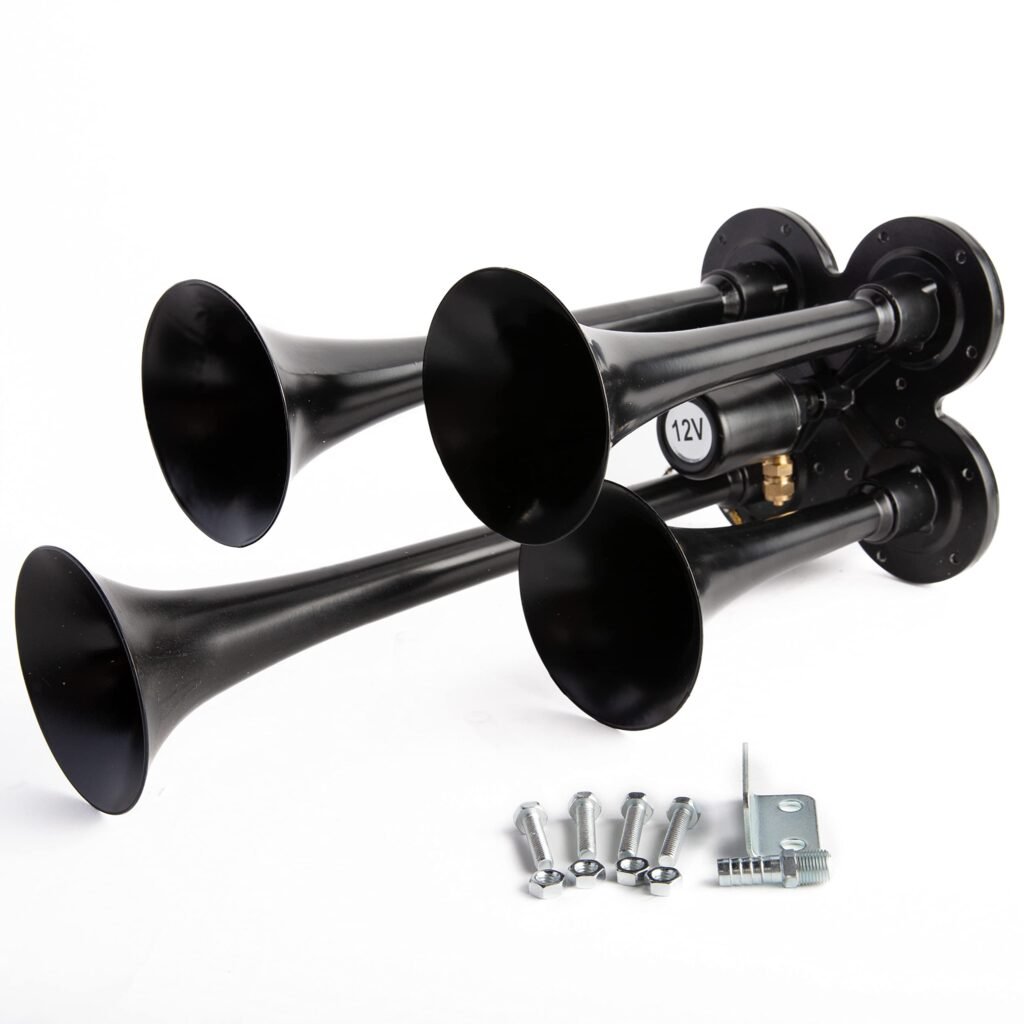
When it comes to catching attention, few things can match the power of a loud air horn. Whether alerting ships at sea, signaling trains on the tracks, or grabbing attention at sporting events, loud air horns play a crucial role in communication and safety across various industries.
This comprehensive guide explores the fascinating world of loud air horns, from their functionality and applications to the technology behind their ear-piercing sound.
Understanding Loud Air Horns
Loud air horns, commonly called pneumatic horns, are integral devices that generate sound by vibrating a diaphragm or reed through compressed air. Widely utilized across vehicles, industrial environments, and emergency scenarios, these horns emit attention-grabbing sounds crucial for signaling and safety.
The sound volume of a loud air horn is generally measured in decibels (dB), with specific models capable of reaching incredibly high levels, surpassing 150 dB. This potency underscores their effectiveness in cutting through noise and attracting immediate attention, making them indispensable when prompt communication is vital.
Whether on ships, trains, automobiles, or industrial facilities, the distinct sound of a loud air horn serves as a universal signal for alertness and awareness, highlighting its significance across diverse sectors and applications.
Applications of Loud Air Horns
Loud air horns find applications across a wide range of industries and settings:
Marine Industry: On ships and boats, loud air horns are used as signaling devices to communicate with other vessels, warn of potential hazards, and alert crew members in emergencies.
Automotive Sector: In automobiles, loud air horns serve as safety devices to alert pedestrians and other motorists of the vehicle’s presence, particularly when visibility is limited or obscured.
Railway Systems: Train air horns are a familiar sight and sound at railway crossings, where they alert pedestrians and vehicles of an approaching train and ensure safety.
Industrial Settings: In industrial environments, loud air horns help signal shifts, convey emergency alerts, and indicate the presence of hazards such as chemical leaks or fires.
Sports and Entertainment: At sporting events and concerts, loud air horns are often used to energize the crowd, signal the start or end of an event, and create an atmosphere of excitement.
Technology Behind Loud Air Horns
The technology behind loud air horns is relatively simple yet highly effective. These horns typically consist of a diaphragm or reed, a compression chamber, and a valve mechanism. When compressed air is released into the compression chamber, it causes the diaphragm or reed to vibrate rapidly, producing sound waves that travel through the air and reach the listener’s ears. The size and shape of the compression chamber and the diaphragm or reed design determine the pitch and volume of the sound produced.
Choosing the Right Loud Air Horn
You must consider several factors when selecting a loud air horn:
Volume: Consider the volume or decibel rating of the air horn, ensuring it meets the requirements of your specific application without causing discomfort or hearing damage.
Durability: Consider air horns constructed from high-quality materials such as stainless steel or corrosion-resistant plastics, as these can withstand harsh environmental conditions.
Installation: Consider the ease of installation and compatibility with your vehicle or equipment, ensuring the air horn can be mounted securely and conveniently operated.
Regulatory Compliance: Ensure that the loud air horn complies with relevant safety standards and regulations, mainly when used in commercial or industrial settings.
Conclusion
Loud air horns are indispensable in various industries, providing effective communication, safety, and signaling capabilities. From marine vessels and automobiles to railway systems and industrial settings, these horns are vital in alerting and informing people in diverse environments.
By understanding the technology behind loud air horns and considering factors such as volume, durability, and regulatory compliance, businesses and individuals can choose the right horn for their specific needs and applications. Whether navigating the open sea or city streets, the unmistakable sound of a loud air horn ensures that important messages are heard loud and clear.

